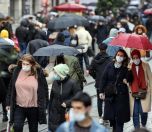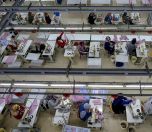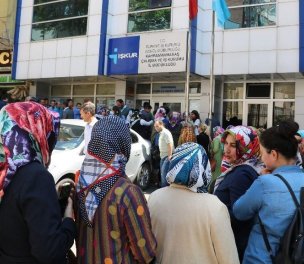Photo: Ministry of Industry and Technology
Click to read the article in Turkish
The Union of Chambers of Turkish Engineers and Architects (TMMOB) Chamber of Mechanical Engineers has released its monthly report on industrial production.
Prepared with contributions from economist Mustafa Sönmez, the bulletin is based on figures by the Turkish Statistical Institute (TurkStat), the Central Bank, the Ministry of Treasury and Finance, the Banking Regulation and Supervision Agency (BDDK), the Strategy Budget Presidency.
The report points out that the relative growth in industrial production was at the expense of reduced employment and wages in real terms.
Here are some highlights of the report:
- While the annual growth rate of industrial production remained under 1 percent after the adoption of the presidential government system in 2018, it increased by only 1.6 percent in 2020. This happened with fewer hours per unit (lower actual employment) and an increased workload on the labor force. This situation manifested as an increase in the productivity of the hourly workforce.
- Despite this heavy workload, nominal wages per unit of production decreased by 5 percent in the face of consumer inflation. Against the exchange rate of the US dollar, which increased by 24 percent in 2020, the decline in the wages per unit of production was over 12 percent. This is an indication that the burden of keeping the industry afloat was laid on the labor force and that the injustice in distribution was increased against the labor force during the period of the pandemic.
- Although industrial production increased by 1.6 percent in 2020, the year of the pandemic, the 5 percent shrinkage in real wages shows that wage earners suffered further losses in purchasing power and became impoverished, let alone taking a share from the production-welfare growth.
- Another picture of this relative impoverishment can be viewed from the "GDP by income" data. This shows that the share of the labor force in GDP shrank.
- While GDP grew by 1.8 percent in 2020, the share of the workforce in GDP did not increase compared to the previous year. The share of the labor force decreased from 31.3 percent in 2019 to 29.4 percent in 2020. The remainder of GDP was shared as business profit and tax. In other words, even though there was an increase of 1.8 percent in GDP, the labor force could not get a share from the increasing prosperity; on the contrary, its share from the increasing national income decreased. The share of the industrial labor force in the national income decreased from 7.4 percent in 2019 to 7.1 percent in 2020.
- The tendency towards production with less employment caused an increase in unemployment. As the TurkStat began publishing the data of broad unemployment after a long time under the name of "idle labor force," it was understood that the real unemployment rate was over 30 percent while the narrow unemployment was about 12 to 13 percent. It also revealed that 60 percent of the real unemployment rate was "camouflaged."
- Between March 2019 and November 2020, women's employment decreased from 9.1 million to 8.3 million. The loss of women's employment in agriculture was 350,000. The number of women looking for a job decreased by 380,000. Women's workforce participation rate decreased by 4.8 percent in 20 months. (HA/VK)









